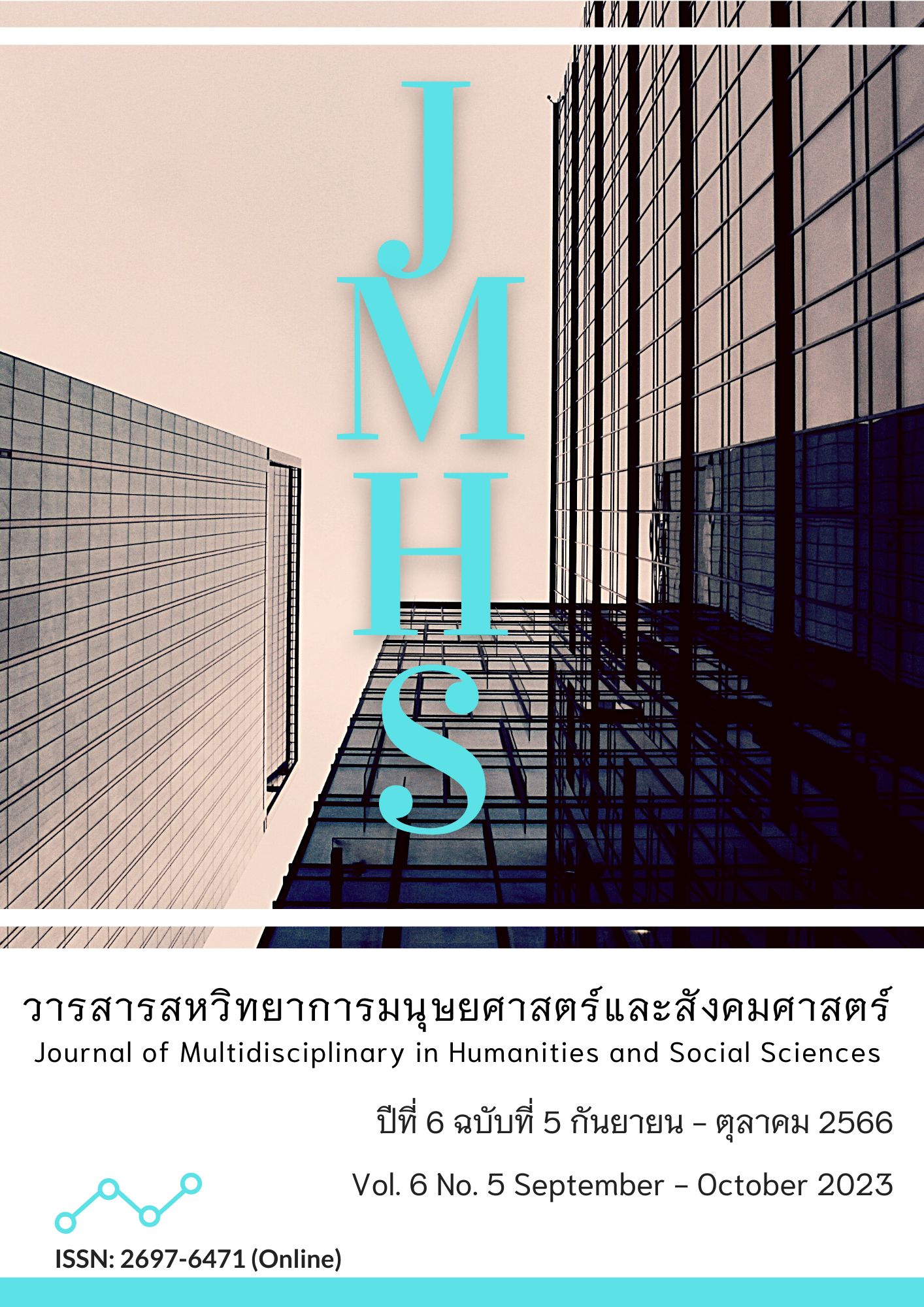The Development of Critical Thinking Using Socio-Scientific Issues Based-Learning on Creatures and Environment toward 5th grade Students
Main Article Content
Abstract
This article aimed to study (1) guidelines for socio-scientific issues (SSI) based-learning on creatures and environments and (2) the development of critical thinking skills after receiving learning management for 5th grade students. The research methodology was qualitative action research using constructivism, socio-scientific issues (SSI) based-learning, and the critical thinking of Watson and Glaser (2002). The target group was 24 5th grade students of a municipal school in Sukhothai during the academic year 2022. The research tools were 1) lesson plans; 2) reflections; 3) activity worksheets; and 4) critical thinking assessment forms. The data analysis was content analysis using mean, percentage, and content validation by method and resource triangulations. The research results were found as follows:
1. Guidelines for socio-scientific issues (SSI) based-learning consisted of: 1. identifying; 2. recognizing; 3. investigating; 4. reviewing; and 5. reflecting.
2. The result of critical thinking development during learning management 3 action cycles was excellent at 80.74 percent, and the result of critical thinking assessment after learning management for students was good at 82.08 percent.
This result of the research was guidelines for socio-scientific issues (SSI) based-learning to develop critical thinking skills for primary and secondary students continually.
Article Details

This work is licensed under a Creative Commons Attribution-NonCommercial-NoDerivatives 4.0 International License.
Views and opinions appearing in the Journal it is the responsibility of the author of the article, and does not constitute the view and responsibility of the editorial team.
References
กมลวรรณ กันยาประสิทธิ์. (2558). ประเด็นทางวิทยาศาสตร์กับสังคมในศตวรรษที่ 21. วารสารศึกษาศาสตร์, 26(2), 5.
กีรติกา อินทร์ชัย, นพมณี เชื้อวัชรินทร์, เชษฐ์ ศิริสวัสดิ์ และมันทนา เมฆิยานนท์. (2564). การวิจัยเชิงปฏิบัติการในการจัดการเรียนรู้ โดยใช้ประเด็นทางสังคมที่เกี่ยวเนื่องกับวิทยาศาสตร์ที่มีต่อผลสัมฤทธิ์ทางการเรียนและการคิดอย่างมีวิจารณญาณ. วารสารวิชาการศึกษาศาสตร์ศรีนครินทรวิโรฒ, 22(2), 1-18.
ลฎาภา สุทธกูล และ ลือชา ลดาชาติ. (2013). การให้เหตุผลทางวิทยาศาสตร์ของนักเรียนชั้นประถมศึกษาปีที่ 4. Naresuan University Journal, 21(3), 107-123.
วิจารณ์ พานิช. (2558). วิถีสร้างการเรียนรู้เพื่อศิษย์ในศตวรรษที่ 21. วารสารนวัตกรรมการ เรียนรู้ มหาวิทยาลัยวลัยลักษณ์, 1(2), 3-14.
สิรินภา กิจเกื้อกูล. (2557). การจัดการเรียนรู้วิทยาศาสตร์: ทิศทางสำหรับครูศตวรรษที่ 21. เพชรบูรณ์: จุลดิสการพิมพ์.
สุคนธ์ สินธพานนท์. (2558). การจัดการเรียนรู้ของครูยุคใหม่ เพื่อพัฒนาทักษะนักเรียนในศตวรรษที่ 21. กรุงเทพฯ: เทคนิคพริ้นติ้ง.
แสงแก้ว พานจันทร์. (2019). แนวทางการจัดการเรียนรู้โดยใช้ประเด็นทางสังคมที่เกี่ยวข้องกับวิทยาศาสตร์ที่ส่งเสริมการเปลี่ยนแปลงมโนทัศน์และเจตคติต่อวิทยาศาสตร์ เรื่อง ระบบหมุนเวียนเลือดและระบบภูมิคุ้มกันของนักเรียนชั้นมัธยมศึกษาปีที่ 4. วารสารชุมชนวิจัยมหาวิทยาลัยราชภัฏนครราชสีมา, 13(3), 212-224.
Besar, P. H. (2018). Situated Learning Theory: The Key to Effective Classroom Teaching?. International Journal for Educational, Social, Political & Cultural Studies, 1(1), 49-60.
Lee, Y. C., & Grace, M. (2012). Students' reasoning and decision making about a socio-scientific issue: A cross‐context comparison. Science Education, 96(5), 787-807.
Vygotsky, L. S., & Cole, M. (1978). Mind in society. Development of higher psychological processes. Harvard University.
Watson, G., & Glaser, E. (2002). Watson-Glaser critical thinking appraisal. UK edition: practice test. Psychological Corporation.
Zeidler, D. L. (2003). The role of moral reasoning and the status of socioscientific issues in science education. Netherlands: Kluwer Academic Publishers.
Zo`bi, A. S. (2014). The effect of using socio-scientific issues approach in teaching environmental issues on improving the students’ ability of making appropriate decisions towards these issues. International Education Studies, 7(8), 113-123.


